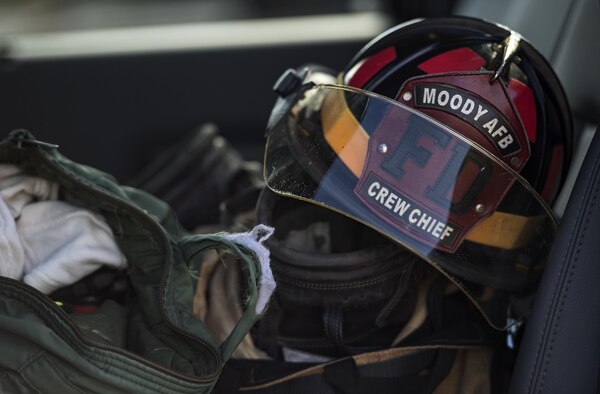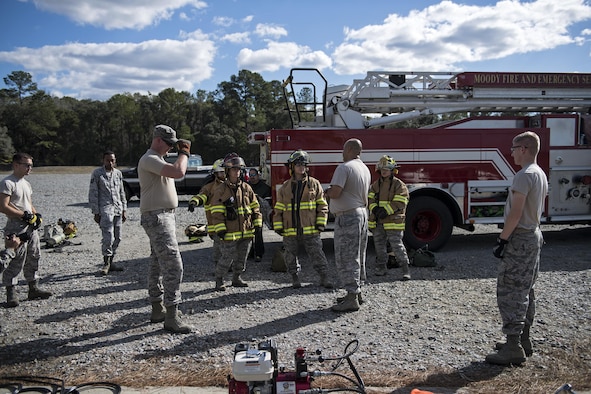 |
| Photo By Lance Cpl. Liah Kitchen | Aircraft Rescue and Firefighting Marines with Headquarters and Headquarters Squadron (HHS) and Marine Wing Support Squadron (MWSS) 473 test their gear before conducting a controlled burn exercise at the ARFF training pit at Marine Corps Air Station Miramar, Calif., March 4. Marines with ARFF are responsible for any fire or hazardous material mishap that involves an aircraft. (U.S. Marine Corps photo by Lance Cpl. Liah Kitchen/Released |
03.04.2017
Story by Lance Cpl. Liah Kitchen
Marine Corps Air Station Miramar / 3rd Marine Aircraft Wing
Marines with Marine Corps Air Station Miramar Aircraft Rescue and Firefighting (ARFF) are responsible for any fire or hazardous material mishap that involves an aircraft on MCAS Miramar, California and the surrounding areas.
They attend a three-month course at Goodfellow Air Force Base in San Angelo, Texas. This base is home to the firefighting training center for all branches of the military. During this training, Marines learn how to fight structural fires, deal with hazmat situations and train to become first responders. After this training is complete, Marines specifically specialize in aircraft firefighting.
“The training that we receive in the schoolhouse is valuable,” said Sgt. Troy Bloom, a firefighter and the hazardous material chief with Headquarters and Headquarters Squadron (HHS) ARFF. “But in order to stay ready, you need to keep training for what you may face if an aircraft goes down.”
Marines with HHS and Marine Wing Support Squadron (MWSS) 473 ARFF reinforced these skills by conducting a controlled burn exercise at the ARFF training pit on MCAS Miramar, March 4.
During a controlled burn, Marines with ARFF light fuel fires in a water training pit, simulating how hot a fuel fire is and how it reacts to firefighting techniques.
The training allowed Marines from MWSS-473, a reserve unit, to integrate with the HHS active duty Marines during their drilling period.
“It’s really great to get out and train,” said Sgt. Michael McAngus, the platoon sergeant and a firefighter for MWSS-473 ARFF. “Being a reserve unit, we don’t always have the time or resources to get out and conduct training with a live fire.”
Controlled burn exercises allow ARFF Marines familiarity with their gear in a real world experience.
“We had several Marines in the unit who had never conducted this training before,” said McAngus. “It was a good for them to be around a live fire, to understand what to do if they make a mistake or fall during an actual fire.”
Due to the high tempo of airfield operations, Marines with HHS ARFF work varying shifts, ranging from 48-72 hours.
“When the airfield is open, we have to have a crew posted on the flightline,” said Bloom. “This ensures that we will be able to respond to a mishap if it should occur at any point during the day or night.”
Situational readiness is one of the most important traits required by ARFF firefighters.
“If we have to do our job, that means that we have an aircraft that went down somewhere,” said Bloom. “It’s important for us to be able to know what we are doing to go in and rescue that aircrew.”



